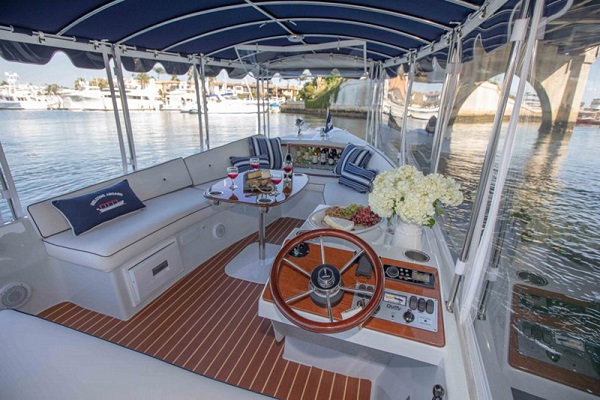EarthTalk®
From the Editors of E – The Environmental Magazine

Dear EarthTalk: I am in the market for a small motor boat to putter around in lakes near my home in Michigan but I don’t want to contribute to water pollution. What are my options? — Marlene Y., Merritt, MI
No doubt, boating can be an environmental nightmare given the spewing of petrochemicals and other pollutants into the waterways we love, and the toll it takes on marine wildlife and ecosystems. Spilling even a small amount of oil, diesel or gas can contaminate acres of water and poison shellfish beds.
Meanwhile, hull paints leach copper and other toxins into the water, while soaps and other cleaning solutions—not to mention the improper discharge of on-board sewage holding tanks—can be toxic to aquatic life as well.
But if you take proper precautions, boating doesn’t have to be so bad. According to the non-profit Oceana, being careful not to spill during refueling seems trivial but could save the life of marine wildlife nearby. And if your boat has a two-stroke outboard engine, you can do a lot better for the environment by upgrading to a newer four-stroke engine. Due to the way they’re designed, two-strokes lose up to 30 percent of their fuel right into the water, and are about a third less fuel efficient overall than newer, four-stroke counterparts.
Even better, get an emissions-free electric motor (inboard or outboard) from a company like Ray Electric, Aquawatt, Torqeedo, Elco or Pure Watercraft. The last few years have seen lots of innovation in the industry—including the development of high-capacity marine-grade lithium-ion or absorbed glass mat (AGM) batteries which in some cases can be charged up by on-board solar panels.
If you want to buy a new all-electric boat, Ray Electric and Aquawatt have several options—from fiberglass speedsters to pontoon party boats to wooden fishing boats. Another option is Duffy Boats, which makes 18- and 22-foot all-electric cruisers perfect for puttering around a harbor or lake at cocktail hour and entertaining friends. The company brags that its boats “do 5 mph better than anyone else!”
If you’re just trying to be greener on an existing boat, take care to only use non-toxic cleaning products inside and out, and avoid conventional hull paint containing toxic heavy metals. Always hose off your boat right after you take it out of the water so you don’t transport any marine species, invasive or otherwise, to your driveway or your next launch spot. Also, if your boat has a “head,” make sure to get it pumped out properly so you don’t release bacteria-laden human waste—often containing traces of antibiotics and medications that aren’t good for marine wildlife—into the water column.
Of course, you could always just forego the worry, environmental footprint and expense of a motor boat and go green in a kayak or canoe. Self-powered boats don’t emit any pollutants whatsoever and allow you to get closer to wildlife which would otherwise be scared off by engine noise—and you can get a good workout as well. Likewise, you could get a small sailboat that doesn’t need a motor—and pray for wind (or download a wind prediction app and time your outings accordingly).
CONTACTS:
Oceana, oceana.org;
Aquawatt, www.aquawatt.at;
Torqeedo, www.torqeedo.com;
Ray Electric Outboards, rayeo.com;
Pure Watercraft, www.purewatercraft.com;
Elco Motor Yachts, elcomotoryachts.com;
Duffy Boats, www.duffyboats.com.
EarthTalk® is produced by Roddy Scheer & Doug Moss for the 501(c)3 nonprofit EarthTalk.
To donate, visit www.earthtalk.org.
Send questions to: question@earthtalk.org.
